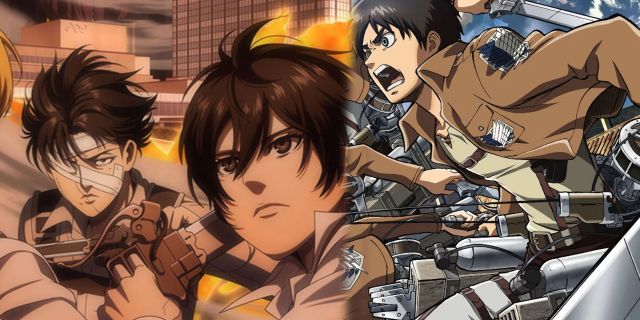Highlights
- MAPPA took on the final season of Attack on Titan, bringing a more realistic art style that divided fans’ opinions.
- WIT Studio excelled in action scenes with ODM gear while MAPPA focused on realism and rotoscope animation.
- The change in art style from WIT to MAPPA highlighted a shift in visual focus, sparking debate over which studio did it better.
Over the course of the COVID-19 pandemic, many anime were either put on hold or took a backseat. Though because of Attack on Titan‘s popularity, fans didn’t want to be let down, and so in WIT Studio‘s place, MAPPA took up the mantle to animate the final season of Attack on Titan.
The most visible differences between the two were the art style, which embodied Isayama’s artstyle more accurately, yet fans missed the unique mix of realism and contrast that WIT and Production IG gave the anime, which let it stand out as its own medium. Though MAPPA‘s effort to deliver the final episode was nothing short of stellar, a common argument remains among fans to this day: who did it better?
Animation
The most popular aspect that Attack on Titan was known for were scenes with ODM gear. Utilizing a healthy dose of CGI and 2D animation, WIT Studio excels in its action scenes. With Tetsuro Araki as the director, there is no room for disappointment. As this was also a collaboration with Production IG, the latter always maintains a steady consistency with character designs. This includes a crisp and sharp aesthetic, with a healthy mix of warm colors or cool colors depending on the scene, rather than other studios, that tend to mix and match.
MAPPA and realism go hand in hand. So much so that Chainsaw Man was often compared to a real film when it came to choreography. Rotoscope animation also plays a large part in its production process. In season 4 of Attack on Titan, we see a lot of this being utilized in character interactions, such as when Gabi and her friends return to Liberio. We also see instances of this in its final OP, “The Rumbling”, where Eren puts on his jacket in the beginning, and when his hair becomes undone at the end. In all, MAPPA is one of the more “realistic” studios when it comes to animation consistency.
A common argument in MAPPA‘s favor is that the final season is dark in tone. However, WIT Studio has demonstrated the ability to animate darker themes, as it is a branch of Production IG, one of the talents behind Psycho-Pass.
Art Style

Isayama’s art style has certainly evolved over the course of Attack on Titan‘s serialization, and the anime reflects that. Though in season 3, WIT‘s style maintained the original visuals while still adjusting to Isayama’s current style to keep its consistency. We see in a teaser for season 4, before MAPPA was slated to take over as the primary animation, an image of Eren looking at his own reflection post-timeskip. He still has that darkened look in his eyes that we see in MAPPA‘s art direction, but what’s most noticeable is that in WIT‘s style, Eren, along with his peers, are more visibly young. Moreover, there’s a hyperfocus on eyes in WIT‘s style.

One of the biggest things about season 1-3 of Attack on Titan was the wide range of emotion characters exhibited, and most of that was primarily through their eyes. With MAPPA, there’s less emphasis on the eyes, and more on the rest of the face. This could also be partially attributed to the fact that WIT is more stylistic, whereas MAPPA focuses on creating a sense of realism. While both are competent studios for Attack on Titan, the fact that the series began and created a legacy around a heavily stylized and color centered aesthetic, needs to be taken into account. The tone of the series shifted, yes, but the visual legacy of Attack on Titan had already been established, making the change jarring in the eyes of audiences.
On the contrary, had MAPPA (or Madhouse) picked up Attack on Titan‘s anime adaptation from the get go, the exact same set of points would apply. Maintaining a steady visual consistency is important for any adaptation, regardless of tonal shifts.
Which is Better?

Saying which studio is “better” would be undermining the qualities each studio brings to the table. For most, it’s a matter of personal taste, but as a production, it’s best to be viewed in entirety. Another thing to consider is that the director changed from Tetsuro Araki to Yuichiro Hayashi, hence why the ODM and action sequences are so different. The question should be: which studio should have animated Attack on Titan first?











Leave a Reply